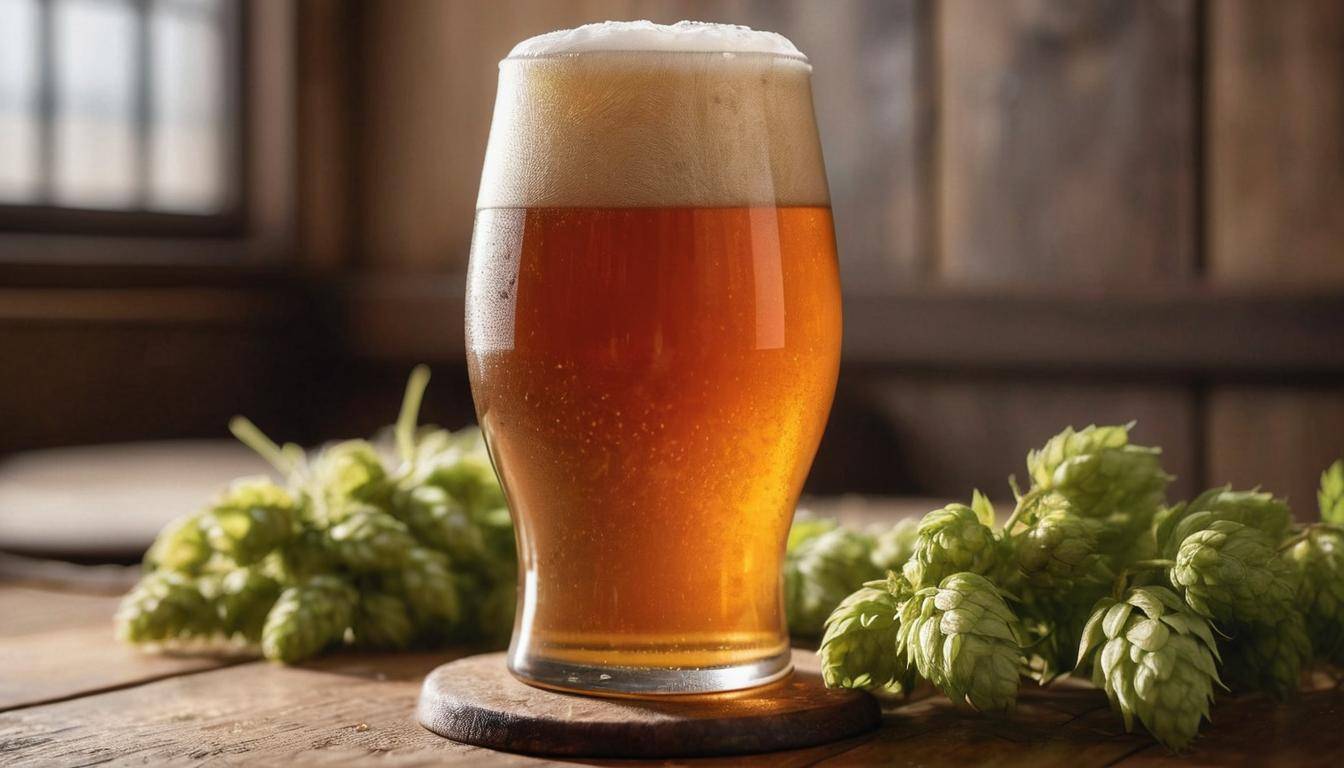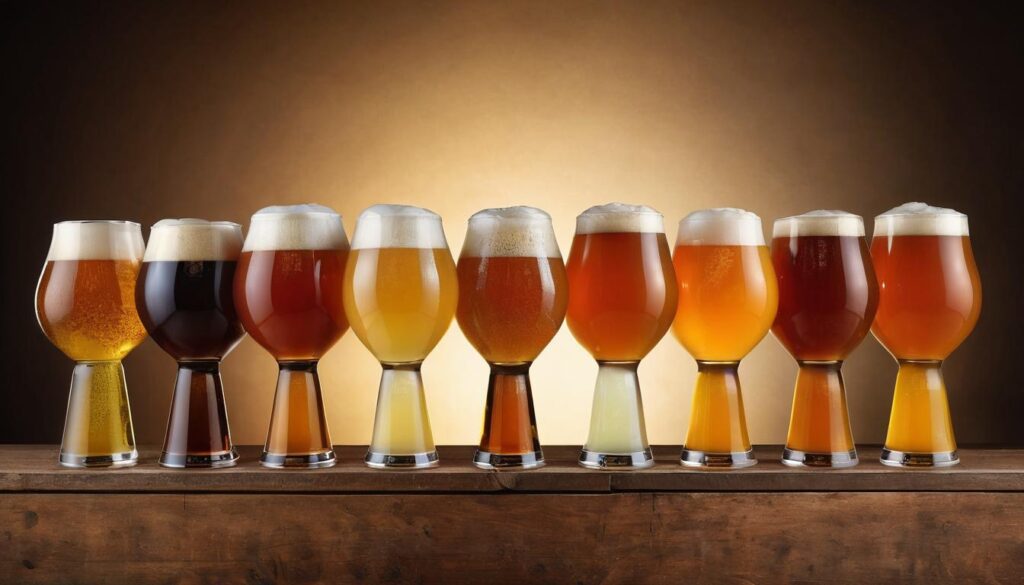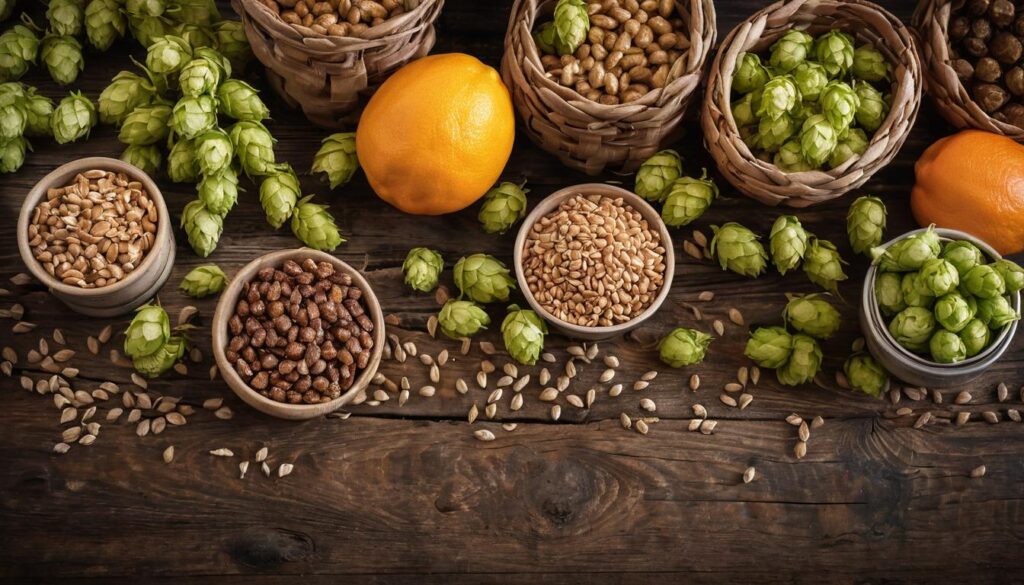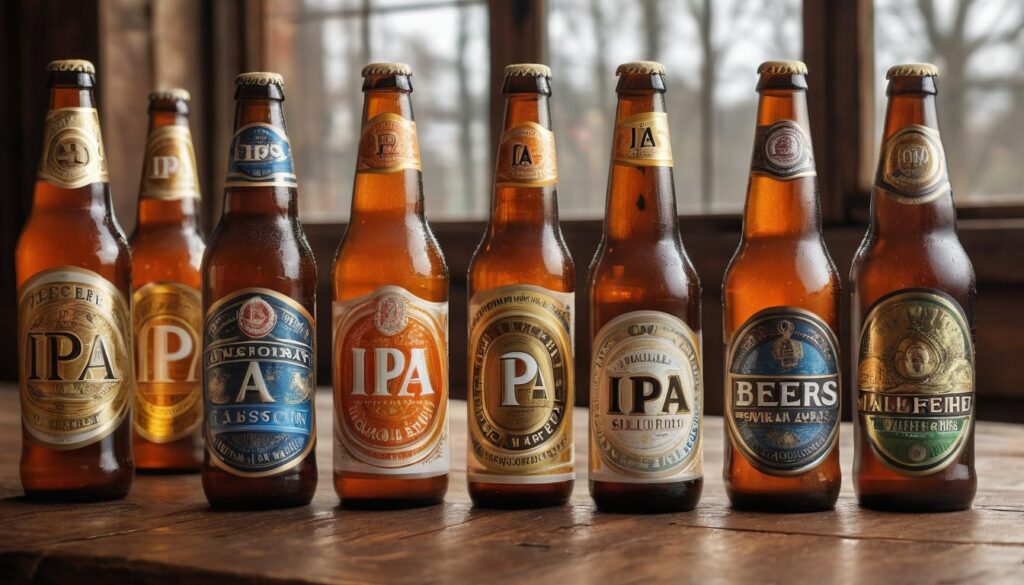
Ever wondered why India Pale Ales (IPAs) have captured the hearts of craft beer enthusiasts worldwide? Why are IPAs so popular? The answer lies in a blend of history, science, and taste. Emerging from 18th century England, IPAs were initially brewed to survive long sea voyages, which is why they boast higher levels of hops. Over time, these hoppy beers became a staple in the craft beer movement, especially in the United States.
IPA popularity starts with bitterness and unique fruitiness that make IPAs stand out. But did you know that it’s not just about flavor? Specific brewing techniques elevate these qualities, creating diverse textures and aromas. Today’s IPAs cater to a growing market segment where over 40% of craft beers are now IPAs. To understand why these beers are so beloved requires exploring both their historical journeys and modern brewing nuances.
IPAs have gained immense popularity due to their unique flavor profiles, distinct bitterness, and higher alcohol content, appealing to both hop enthusiasts and a diverse range of beer drinkers. Additionally, the craft beer movement and the wide variety of IPA styles offered by microbreweries have further contributed to their widespread appeal.

The Rise of IPAs at Breweries as a Popular Drink
The resurgence of India Pale Ales (IPAs) is not simply a trend; it has become a defining characteristic of the modern craft beer landscape. Originating in 18th century England, where they were brewed to endure long sea voyages to India during the British colonial period, IPAs experienced a significant shift in perception and popularity with the onset of the craft beer revolution in the United States. This revolution, which gained momentum in the late 20th century, brought new life to traditional beer styles and introduced innovative brewing techniques, transforming IPAs from a niche offering to a staple in breweries across the country.
Mico and Nano Breweries Build Hoppy IPA Flavors
Amidst the establishment of microbreweries and the revival of traditional brewing practices that emphasized bold flavors and unique experiences, IPAs found themselves at the forefront of this movement. Craft brewers, inspired by American historical examples such as Ballantine IPA, were drawn to the versatility and creative potential of brewing IPAs. The combination of higher hop levels for preservation and the exploration of various hop varieties resulted in a spectrum of distinct flavors and aromas, captivating a growing consumer base seeking out bolder, more complex beer profiles.
The IPA Popularity Grows
The evolution and appeal of IPAs were further propelled by consumer demand for enhanced drinking experiences. As craft beer enthusiasts sought out beers with intense flavors and character, IPAs stood out as an emblem of innovation and creativity in brewing. This consumer desire for stronger, distinctive taste profiles played a pivotal role in cementing IPAs as a dominant force within the craft beer market.
Today, IPAs represent a significant portion of craft beer production in the U.S., accounting for over 40% of all varieties brewed. This remarkable statistic underscores their enduring popularity and widespread acceptance among both seasoned beer connoisseurs and newcomers to the craft beer scene. The versatility of IPA styles and their association with experimentation continue to drive their prominence, establishing them as a hallmark of contemporary beer culture.
The meteoric rise of IPAs within the craft beer industry illuminates their enduring influence on consumer preferences and aligns with broader shifts towards innovative, flavor-forward brews.
The exponential growth of IPAs not only reflects changing consumer tastes but also sets the stage for an exploration of how different flavor profiles and textures play into the overall experience of enjoying craft beers.

IPA Flavor Profiles and Body in Beers
When you take a sip of an IPA, you’re met with a burst of bitterness that sets it apart from other beer styles. This bitterness is a result of the hops used in brewing. But here’s where things get interesting – it’s not all about the bitterness. IPAs are like a symphony of flavors, with fruity and tropical notes that complement the bitter backbone. Think of it as a beautiful balance between intense bitterness and vibrant, almost exotic fruitiness. For instance, Citra hops bring out zesty citrus and tropical fruit flavors, while Simcoe hops lend earthy and pine-like aromas.
These diverse flavor profiles are what set IPAs apart. They cater to different preferences, making them beloved by a wide range of beer enthusiasts. Whether you prefer the tangy appeal of citrus or the soothing embrace of pine, there’s an IPA flavor profile for everyone. The versatility doesn’t stop there; it extends to the texture of IPAs as well.
Some IPAs offer a clear and crisp experience, commonly associated with West Coast IPAs. On the other hand, New England IPAs take on a more hazy appearance and introduce a velvety mouthfeel – like taking a smooth, indulgent sip. The hazy characteristic adds an element of mystery to these brews, leaving you to anticipate their taste and texture with every pour.
What does this mean for IPA lovers? Well, simply put, their options are vast and ever-evolving. Each IPA variety brings something new to the table, catering to different mood and taste preferences.
It’s this amazing interplay of flavors and textures that keeps beer enthusiasts coming back for more, eager to explore the intricate world of IPAs.
Influence of Hops and ABV on Beer Culture
Hops are the heart and soul of IPAs, infusing them with that distinctive bitterness, captivating aroma, and complex flavors. Each variety of hop brings unique characteristics to the brew, shaping the overall taste of the IPA. For example, the Citra hop is known for its bold citrusy notes, while the Amarillo hop adds delightful floral and tropical flavors, crafting a multi-dimensional tasting experience loved by beer enthusiasts.
Now, it’s not just about flavor; it’s about bitterness too. This bitterness is mostly attributed to alpha acids found in hops. The International Bitterness Units (IBUs) quantify the level of bitterness, typically ranging between 40 to 100 for IPAs. This substantial bitterness can be polarizing, earning praise from some while turning off others. Some enjoy the assertive bite, finding it invigorating, while others prefer a milder palate. Regardless of personal preference, it’s this characteristic bitterness that defines the IPA style.
Let’s talk about ABV – Alcohol By Volume. Unlike standard lagers or pilsners, IPAs boast a higher ABV, typically between 5.5% and 7.5%. And for those seeking a more robust drinking experience, there are imperial or double IPAs with an ABV exceeding 8%. This elevated alcohol content attracts consumers looking for a stronger, more potent brew.

So what does this mean for IPA enthusiasts? “The practical impact is that hop varieties and IBU levels heavily influence the perceived bitterness and flavor profile of an IPA, while ABV provides a stronger alcoholic punch compared to other beer styles.”
The Role of Hops in Crafting IPA Flavor
Understanding hops is like knowing the secret ingredients in your favorite dish – each one plays a critical role in delivering that perfect blend of flavors. Whether it’s the zesty punch from Cascade hops or the spicy complexity from Centennial hops, these distinct hop characters contribute to diverse interpretations of IPA styles.
Beer Balancing Act: The Impact of Alpha Acids on Bitterness
When it comes to bitterness in IPAs, we have alpha acids to thank – or blame, depending on whether you fall on team bitter or not! Found within hops, these alpha acids determine the perceived bitterness level in beer. By leveraging different hop varieties boasting varying alpha acid levels during the brewing process, brewers can precisely modulate the bitterness factor to cater to specific taste preferences.
From Sessionable to Potent: Understanding Alcohol By Volume (ABV) in an IPA
Switching gears, let’s talk about Alcohol By Volume (ABV). IPAs tend to pack a bit more punch compared to other beer styles thanks to their higher ABV. With most falling within the range of 5.5% to 7.5%, these brews offer a stronger alcoholic content that resonates with those seeking a heartier libation without compromising on flavor.
So there you have it—a closer look at how hops and ABV work together to shape the vibrant and enticing world of IPAs. Each element plays a pivotal role in creating an experience that continues to captivate beer enthusiasts worldwide.

Brewing IPAs: The Role of Yeasts and Malts
When crafting IPAs, a critical factor contributing to their distinctive taste are the tiny living organisms, yeasts, and the grains used, known as malts. The specific type of yeast employed can significantly influence the beer’s aroma and flavor. Different yeast strains produce varying flavors – some may impart a clean taste, while others contribute fruity or floral scents.
Each strain of yeast exhibits distinct behavior, generating different flavors and aromas as it consumes the sugary malt. For instance, American Ale yeast yields a clean finish with minimal yeast-derived flavor.
Contrastingly, English Ale yeast is more inclined to introduce fruit-like and floral notes to your beer due to the production of chemical compounds called esters. These esters are responsible for the fruity character evident in best beers. It’s akin to how different ingredients can entirely transform the taste of your favorite cake, except here it interacts with sugar and malt.
Shifting focus to malts, these grains serve another vital purpose by contributing body and color to your IPA. In simplistic terms, picture your beer as a painting filled with an array of beautiful colors and textures; malt plays a significant role as one of those special hues in our painting.
The selection of malt varieties influences how your beer feels and appears, despite hops often being the standout feature in an IPA. For example, Pale Ale malt imparts a honey-like color and a milder flavor compared to other types of malt.
IPA Bitterness, Hops and Malt
IPAs are synonymous with bold bitterness and hop-forwardness, occasionally dimming the role of malts. However, in styles such as Imperial IPAs, their significance is amplified. Here, malts step in to harmonize the intense bitterness and higher alcohol content, resulting in an overall harmonious flavor rather than overwhelming bitterness.
Maris Otter malt brings forth ample sweetness and toastiness that counterbalances the pronounced hoppy characteristics in an Imperial IPA. This delightful interplay gives rise to a sophisticated taste where neither hops nor malts dominate but instead blend together cohesively.
So next time you savor an IPA—beyond the mouth-puckering bitterness—acknowledge the subtle interplay between yeast strains and malts quietly yet crucially underpinning that delightful hop quality!
In a similar manner to how yeast and malts sculpt the distinct profile of IPAs, craft breweries have left an indelible mark on the beer landscape. Let’s now journey through the remarkable impact of these breweries on the world of craft beer.
Craft Breweries’ Impact on IPA Popularity in the USA
Over the years, the craft brewery boom has profoundly influenced the beer industry, especially in propelling the surging popularity of IPAs. These independent breweries have played a pivotal role in catapulting IPAs to the forefront of consumer preference, reinventing and redefining what an IPA can be. Their fearless approach to experimenting with various hop varieties, brewing techniques, and styles has revitalized the IPA category, providing consumers with a diverse and refreshing range of options.
Expanding on this idea, breweries like Sierra Nevada, Stone Brewing, and Dogfish Head have been pioneers in this revolution. By embracing a culture of innovation, they have continuously challenged traditional norms and ventured into uncharted territories in pursuit of crafting unique and flavorful IPAs. This relentless dedication to pushing boundaries has not only expanded consumer choices but has also set new benchmarks for quality standards within the craft beer segment.
Breweries such as Stone Brewing Co. have been renowned for their audacious interpretations of IPAs, infusing them with unconventional ingredients and flavors that captivate palates and defy expectations. Their Fear.Movie.Lions Double IPA is a prime example of their boundary-pushing creativity, featuring an infusion of jasmine rice and yeast from space—creating a truly out-of-this-world drinking experience.
The competitive landscape among craft breweries has played a pivotal role in fostering this culture of innovation. As breweries vie for consumer attention, they are compelled to constantly elevate their offerings by experimenting with diverse flavor profiles and brewing techniques. This spirited competition has set a high bar for quality and innovation within the IPA category, resulting in an ever-expanding array of distinctive and top-tier brews characterized by bold flavors and unparalleled craftsmanship.
Craft breweries haven’t just impacted the beer-lover’s experience; they’ve reshaped it entirely. Their unwavering commitment to creativity and excellence has not only fueled the meteoric rise of IPAs but has also redefined the standards for quality and variety within the craft beer landscape.
Defining the Perfect IPA

There’s an allure and subjective nature when it comes to defining what makes the “perfect IPA.” It’s not just about the hops or alcohol content; it’s about the entire experience. For some, it’s all about the classic West Coast IPA, offering a clear and crisp bitterness with robust piney flavors. Meanwhile, others find themselves drawn to the hazy, opaque appearance and juicy, tropical notes of a New England IPA. These varying preferences don’t simply target aroma and taste; they extend to visual appeal as well.
One widely embraced characteristic of a perfect IPA is its well-balanced bitterness. Rather than overwhelming the palate, it complements the other flavors in the beer, adding depth and complexity. Whether it’s an assertive bitterness characteristic of West Coast IPAs or a softer, smoother bitterness found in New England-style creations, achieving this balance is crucial to crafting an exceptional IPA.
Beer Aroma and Finish
Equally important is a strong but pleasant hop aroma that welcomes you before you even take your first sip. This aromatic invitation sets the stage for what’s to come, drawing you into the tasting experience. Furthermore, a clean finish that leaves a favorable impression lingers long after each sip, rounding out the overall appeal of the perfect IPA.
Imagine walking through a sun-drenched pine forest and being greeted by the invigorating scent of freshly blooming flowers – that’s what a stellar IPA aroma can evoke. That final sip should leave you satisfied yet craving another taste – a testament to its clean and appealing finish.
Ultimately, individual preferences have a significant influence on what constitutes the perfect IPA. Brewmasters strive to transform basic ingredients into something truly extraordinary by infusing their own artistry into each brew. Consequently, beer enthusiasts seek guidance from websites and platforms that facilitate discussions, reviews, and ratings which serve as invaluable resources for finding their ideal IPA.
Visit our website to explore detailed reviews and recommendations to find your perfect IPA.
By embracing these nuances in flavor, aroma, and appearance while acknowledging personal inclinations for specific styles, consumers can go beyond just enjoying IPAs – they can connect with them on a deeper level through personalized discovery and exploration of various options.
The science behind IPAs continues to evolve as artisanal craftsmanship meets consumer demand for diverse flavor experiences. Each sip represents an opportunity for enthusiasts to dive deeper into the world of IPAs, forging unique connections with different styles and expressions.
